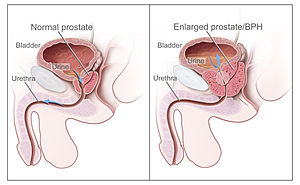Botanical Name : Crataegus oxyacantha
Family: Rosaceae
Subfamily:Amygdaloideae
Tribe: Maleae
Subtribe: Malinae
Genus: Crataegus
Kingdom: Plantae
Order: Rosales
Common Name :Hawthorn
Vernacular names: Eng:Hawthorn,May thom,May blossom
Hindi :Vanasaangli.
Local Name :Pandaakh
Synonyms: May. Mayblossom. Quick. Thorn. Whitethorn. Haw. Hazels. Gazels. Halves. Hagthorn. Ladies’ Meat. Bread and Che ese Tree.
(French) L’épine noble
(German) Hagedorn
Habitat:Hawthorn is available in Europe, North Africa, Western Asia
Description:
Hawthorn is a small to midium sized deciduous tree 5 to 15mtr. tall, grows as a hedge plant in Europe but found mostly in temperate regions North America ,Western Asia, India, China and northern Africa.Its flowers are umbrella shaped and clustered white or pink,leaves are glossy green toothed and the berries are bright shiny red. The white coloured flowers are borne in flat-topped inflorescences termed corymbs or globular in inflorescences termed umbels and usually contains 5 petals,5 and 18 stamens and have a rancid oder. the fruits are known as pomes, although the seeds and their bony ndocarps are termed pyrenes. The calyx is present. The throns are small with sharp tipped branches that arise either from other branches or from the trunk, and are typically 1-3 cm long.Hawthorn bark or stem has hardwood ,smooth and ash-grey.
CLICK & SEE THE PICTURES..>….(01).......(1).…..(2).
Medicinal Uses:
Part Used: Berries, young stems, leaves and flowers.
Plant Constituents of Hawthorn
Contains:
___________
*Amines
*Amyddalin
*Bioflavonoids
*Coumarin (an anti-coagulant)
*Crataegin (alkaloid contained in the bark)
*Glycosides
*Tannins
*Triterpenoid saponins
Action :
_________
*anti-arrhythmic effects (heart)
*anticoagulant [an agent that prevents the formation of clots in a liquid, as in blood]
*antispasmodic [an agent that relieves or checks spasms or cramps]
*antioxidants [contributing to the oxidation of free radicals which are believed to contribute to premature aging and dementia] that help increase the flow of blood and oxygen to the heart
*astringent [an agent that contracts organic tissue, reducing secretions or discharges]
*cardiac [an agent that stimulates or otherwise affects the heart]
*cardiotonic [an agent that has a tonic effect on the heart]
*diuretic [an agent that secretes or expels urine]
*hypotensive [an agent that lowers blood pressure]
*sedative [a soothing agent that reduces nervousness, distress or irritation]
*tonic [an agent that strengthens or invigorates organs or the entire organism]
*vasodilator [an agent that widens the blood vessels, thus lowering blood pressure]
Hawthorn is a good preventative herb for people with a family history of
*angina pectoris
*arteriosclerosis
*hardening of the arteries
*heart attacks
*high or low blood pressure
*valvular insufficiency
*inflammation of the heart muscle
*irregular pulse
Hawthorn is used for:
Blood Conditions
*inflammation of the blood vessels
*strengthens the walls of blood vessels
*varicose veins
Brain and Nervous System Conditions
*enhances poor memory by improving circulation of blood within the head and increasing the amount of oxygen to the brain, when combined with Ginkgo Biloba
*increases blood flow to the brain
*angina, a disease marked by intense chest pain
*arteriosclerosis
*cardiac curative
*enhances the strength of the heart’s contractions
*heart failure and debility
*heart muscle weakened by age
*helps prevent irregular heartbeats called arrhythmias, which can lead to heart attacks
*helps protect the heart against oxygen deprivation by inhibiting free radical formation which is beneficial in maintaining healthy heart vessels and promoting overall heart health
*improves blood supply to the heart
*improves circulation and increases tolerance for physical exertion
*increases blood flow to the heart and brain
*increases metabolism in the heart muscle
*lowers blood pressure (with extended use)
*lowers cholesterol and the amount of plaque in arteries
*myocarditis (inflammation of the heart muscle)
*nervous heart problems
*normalizes blood pressure by regulating the action of the heart, not only lowering high blood pressure but also raising blood pressure that is low
*normalizes cardiovascular functions
*normalizes heart action
*palpitations
*rapid heart beat
*reduces blood pressure and stress to the heart muscle
*relaxes and dilates the arteries
*restorative after a heart attack
*stabilizes and strengthens the heartbeat
*strengthens a heart muscle weakened by age
*supports the heart
*weak heart, combined with Rosemary and Rue
Hawthorn Berries are used for:
*congestive heart failure and circulatory disorders
*increasing coronary blood flow
*mild cardiac insufficiency
Gastrointestinal Conditions
*digestive problems, combined with Cactus grandiflorus
Genitourinary Conditions
*helps rid the body of excess salt and water thus supporting weight-loss and weight control programs
*urinary tract infections, combined with Agrimony, Thyme and Golden Rod
Respiratory Tract Conditions
*sore throat
Other Uses:
*an excellent liquor made from Hawthorn berries and brandy
*repels bees and is only pollinated by flies
Hawthorn is best-used long term as the active constituents do not produce rapid results. Benefits develop slowly having a direct effect on the heart itself, especially in cases of heart damage and heart problems associated with liver disease. It is gentle and safe for long-term use with no toxic side effects.
Disclaimer:
The information presented herein is intended for educational purposes only. Individual results may vary, and before using any supplements, it is always advisable to consult with your own health care provider.
Resources:
http://www.globalherbalsupplies.com/herb_information/hawthorn.htm
http://www.botanical.com/botanical/mgmh/h/hawtho09.html












![Reblog this post [with Zemanta]](https://i0.wp.com/img.zemanta.com/reblog_e.png?w=580)













